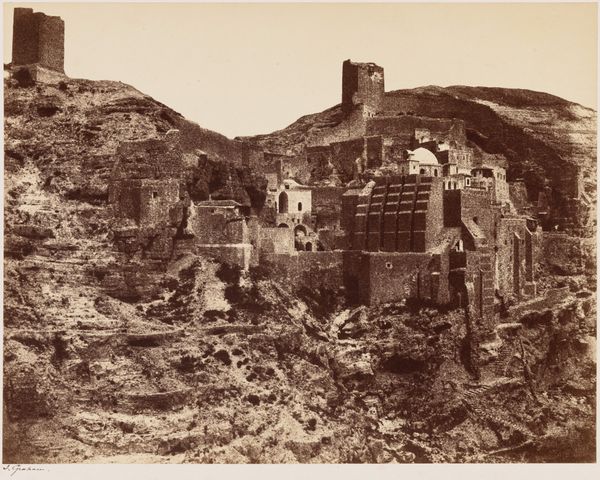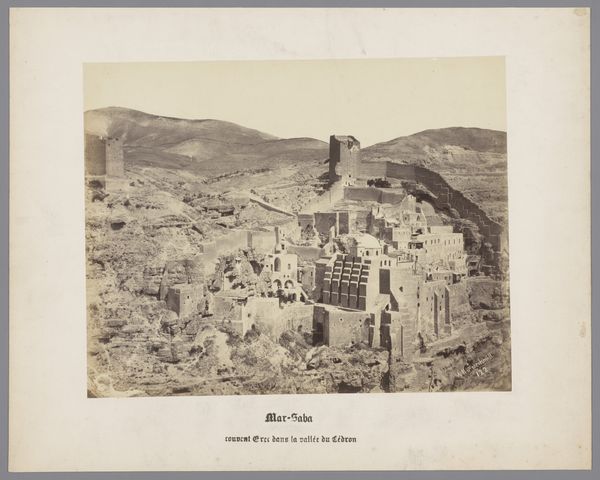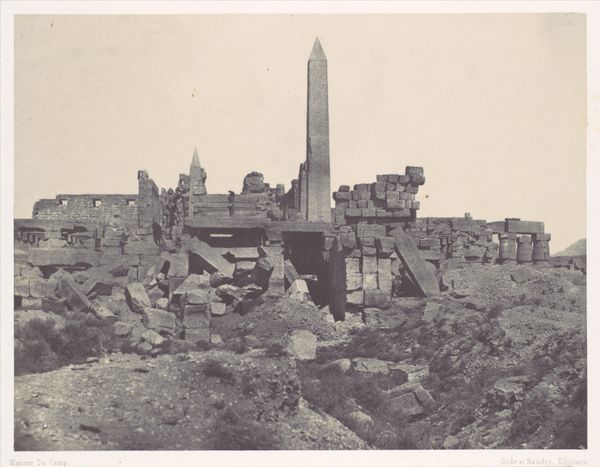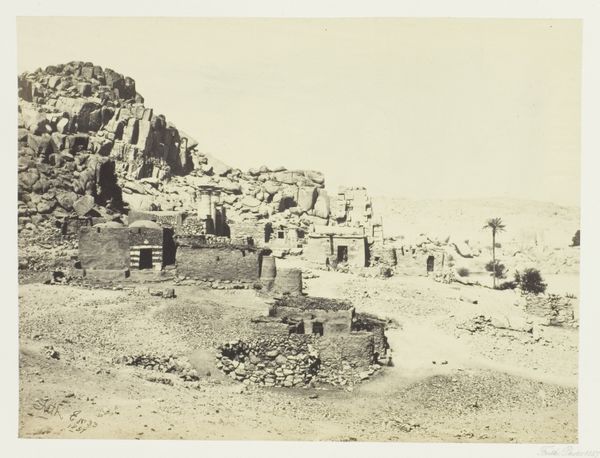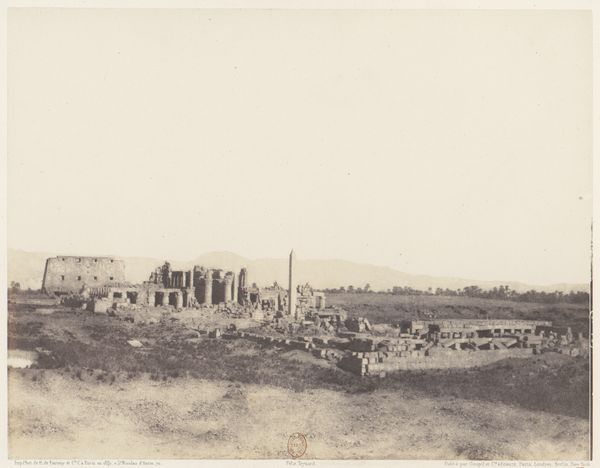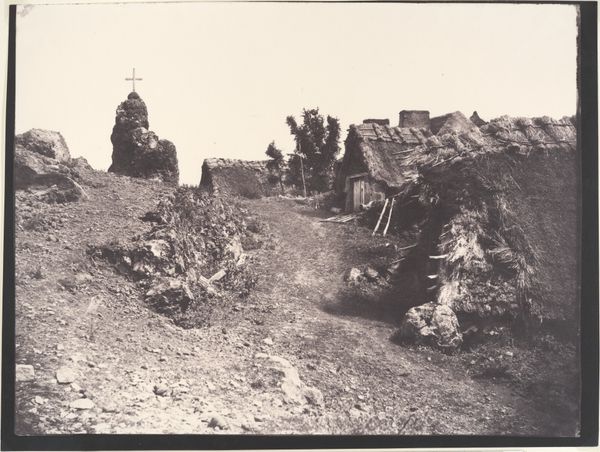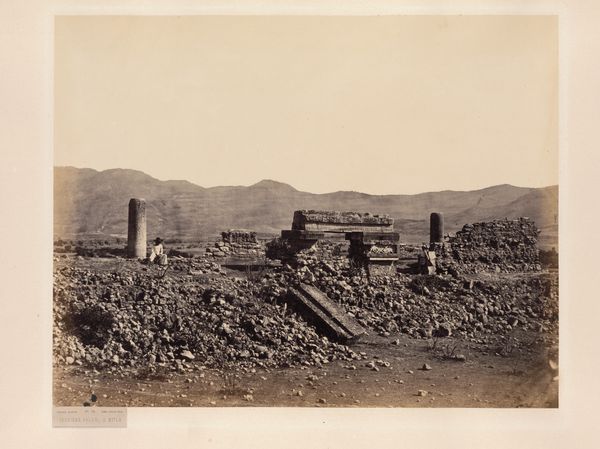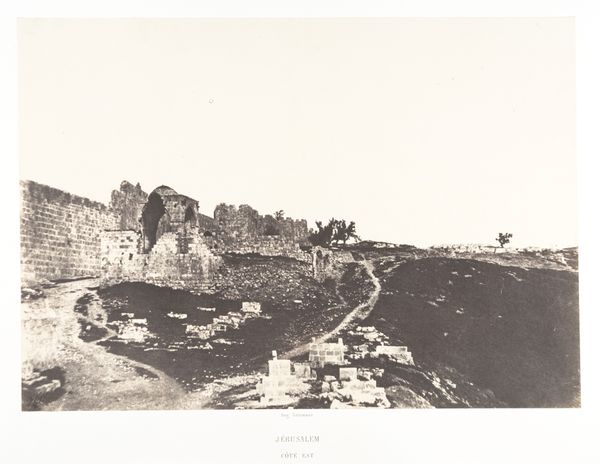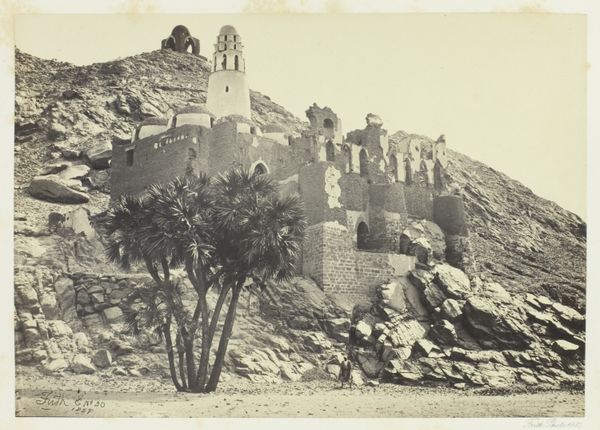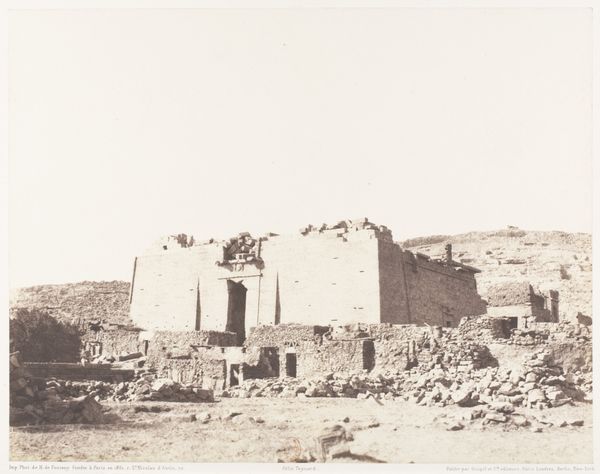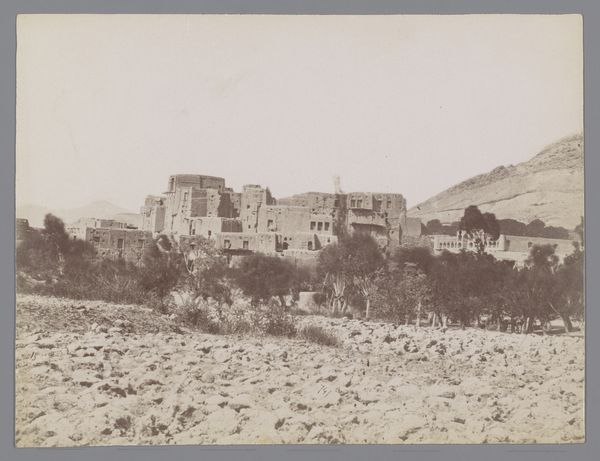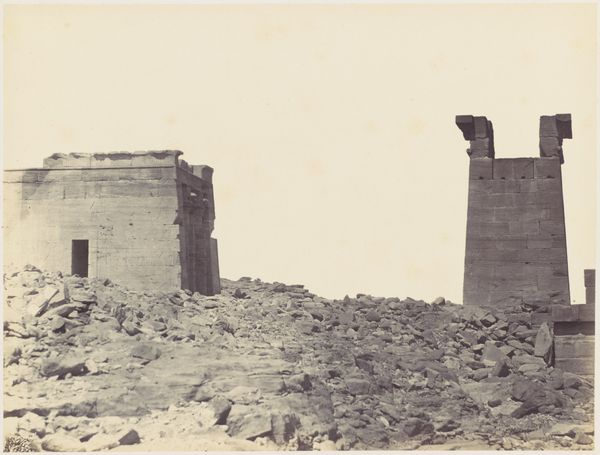
#
natural shape and form
#
natural formation
#
photo restoration
#
organic shape
#
nature
#
outdoor photography
#
outdoor scenery
#
nature heavy
#
outdoor activity
#
shadow overcast
Copyright: Public Domain
Editor: So, this is Maxime Du Camp's photograph, "Thebes. Médinet-Habou. Runes de la ville de Papa," from 1850. Looking at the ruined architecture and the stark landscape, I feel a sense of time and loss, like witnessing a civilization that has crumbled. What strikes you most about this image? Curator: It’s the power dynamic embedded in this supposedly objective representation of ancient Egypt that grabs me. Consider the era: mid-19th century, Western Europe deeply entangled in colonial expansion. Du Camp, a French photographer, is here capturing these ruins. But who is this image really for? It’s easy to be awed by the "romantic" desolation, but shouldn’t we question the gaze through which we’re seeing it? How does this image serve to reinforce European power and ownership over a land and culture it's simultaneously exoticizing and dismantling? Editor: That's a perspective I hadn’t fully considered. It does seem like these photographs, even with their artistic value, contributed to a certain narrative. How does that relate to the figures in the image? Curator: Precisely! Note their placement. They're dwarfed by the architecture, reduced to almost props. What is Du Camp communicating by visually diminishing the contemporary Egyptians against the backdrop of their glorious past? It suggests a fallen state, justifying Western intervention and control, even perhaps, implying they are incapable of preserving their own heritage. Doesn’t it? Editor: I see your point. It is subtle but pervasive. It completely changes how I look at the photo, less about romantic ruin and more about... a statement of power. Curator: And who holds the power to narrate history, and whose voices are being silenced in the process? These are vital questions that artworks like this can provoke. We must confront the uncomfortable truths embedded within their beauty. Editor: Thank you. That gives me a lot to reflect on.
Comments
No comments
Be the first to comment and join the conversation on the ultimate creative platform.
